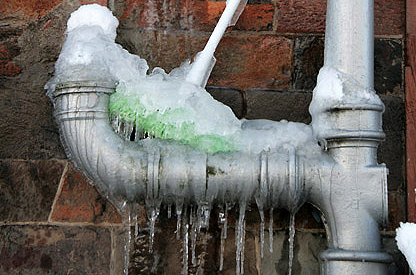Essential Tips to Prevent Frozen Plumbing in Winter: Specialist Guidance
Essential Tips to Prevent Frozen Plumbing in Winter: Specialist Guidance
Blog Article
They are making a few good annotation on Prevent Frozen Pipes in general in this article just below.

Winter can ruin your pipes, specifically by freezing pipelines. Here's how to stop it from occurring and what to do if it does.
Introduction
As temperature levels decrease, the danger of icy pipes rises, potentially leading to pricey repair services and water damages. Comprehending how to avoid frozen pipelines is important for home owners in chilly environments.
Avoidance Tips
Insulating prone pipelines
Wrap pipes in insulation sleeves or use warm tape to shield them from freezing temperatures. Focus on pipelines in unheated or external locations of the home.
Home heating techniques
Keep interior spaces properly heated up, particularly areas with plumbing. Open cabinet doors to allow warm air to circulate around pipes under sinks.
Just how to determine frozen pipes
Look for lowered water circulation from faucets, unusual smells or sounds from pipes, and visible frost on subjected pipes.
Long-Term Solutions
Architectural changes
Think about rerouting pipes far from exterior wall surfaces or unheated locations. Add added insulation to attics, basements, and crawl spaces.
Upgrading insulation
Purchase premium insulation for pipelines, attic rooms, and walls. Proper insulation assists keep consistent temperature levels and decreases the danger of icy pipelines.
Safeguarding Exterior Plumbing
Yard hoses and exterior faucets
Detach and drain pipes garden tubes before winter months. Install frost-proof spigots or cover exterior taps with insulated caps.
Comprehending Icy Pipelines
What creates pipes to ice up?
Pipelines ice up when revealed to temperatures below 32 ° F (0 ° C) for extended periods. As water inside the pipes freezes, it expands, putting pressure on the pipe walls and potentially causing them to burst.
Threats and problems
Icy pipes can result in water system disturbances, residential or commercial property damage, and pricey fixings. Burst pipes can flooding homes and trigger comprehensive architectural damages.
Indications of Frozen Pipes
Recognizing frozen pipelines early can prevent them from breaking.
What to Do If Your Pipes Freeze
Immediate activities to take
If you think frozen pipes, maintain faucets available to relieve stress as the ice thaws. Make use of a hairdryer or towels taken in warm water to thaw pipes slowly.
Conclusion
Protecting against frozen pipes calls for aggressive actions and quick responses. By comprehending the causes, indications, and safety nets, homeowners can safeguard their plumbing during cold weather.
5 Ways to Prevent Frozen Pipes
Drain Outdoor Faucets and Disconnect Hoses
First, close the shut-off valve that controls the flow of water in the pipe to your outdoor faucet. Then, head outside to disconnect and drain your hose and open the outdoor faucet to allow the water to completely drain out of the line. Turn off the faucet when done. Finally, head back to the shut-off valve and drain the remaining water inside the pipe into a bucket or container. Additionally, if you have a home irrigation system, you should consider hiring an expert to clear the system of water each year.
Insulate Pipes
One of the best and most cost-effective methods for preventing frozen water pipes is to wrap your pipes with insulation. This is especially important for areas in your home that aren’t exposed to heat, such as an attic. We suggest using foam sleeves, which can typically be found at your local hardware store.
Keep Heat Running at 65
Your pipes are located inside your walls, and the temperature there is much colder than the rest of the house. To prevent your pipes from freezing, The Insurance Information Institute suggests that you keep your home heated to at least 65 degrees, even when traveling. You may want to invest in smart devices that can keep an eye on the temperature in your home while you’re away.
Leave Water Dripping
Moving water — even a small trickle — can prevent ice from forming inside your pipes. When freezing temps are imminent, start a drip of water from all faucets that serve exposed pipes. Leaving a few faucets running will also help relieve pressure inside the pipes and help prevent a rupture if the water inside freezes.
Open Cupboard Doors
Warm your kitchen and bathroom pipes by opening cupboards and vanities. You should also leave your interior doors ajar to help warm air circulate evenly throughout your home.

As a fervent reader on Prevent Frozen Pipes , I assumed sharing that portion was important. If you liked our article kindly remember to share it. Thank you for taking the time to read it.
Schedule Services Report this page